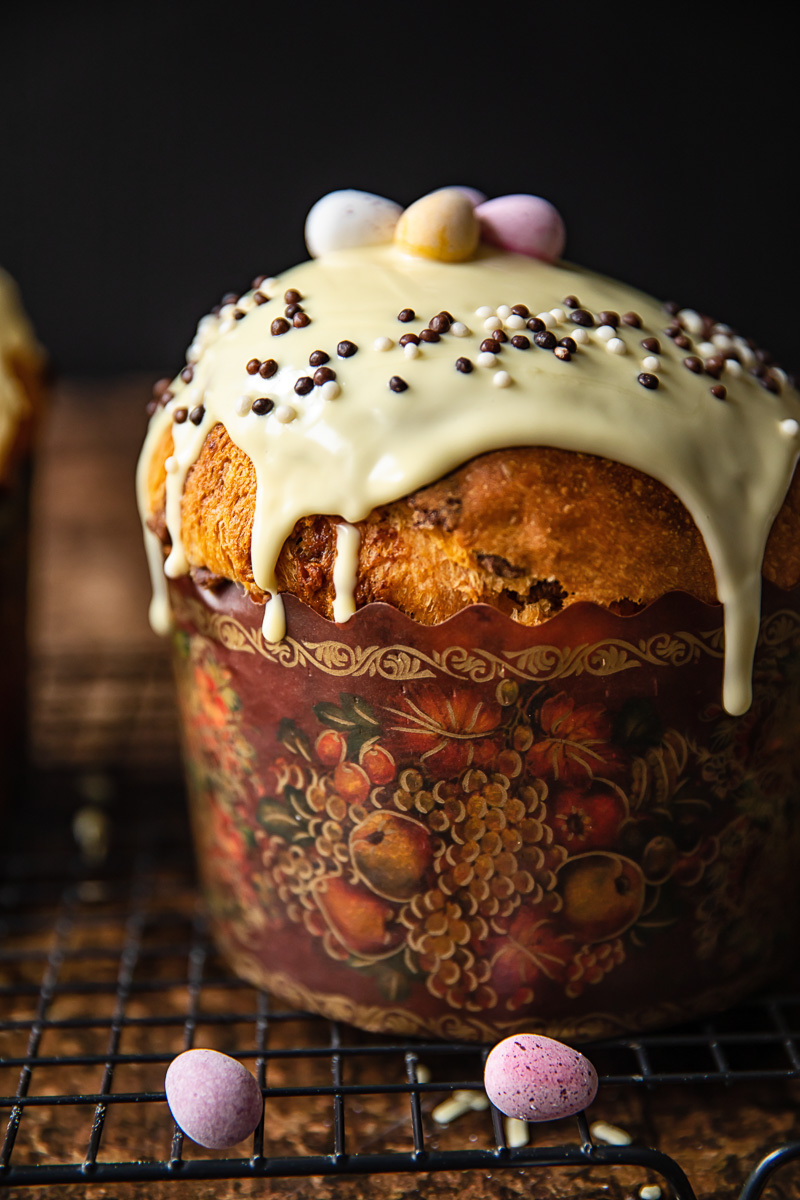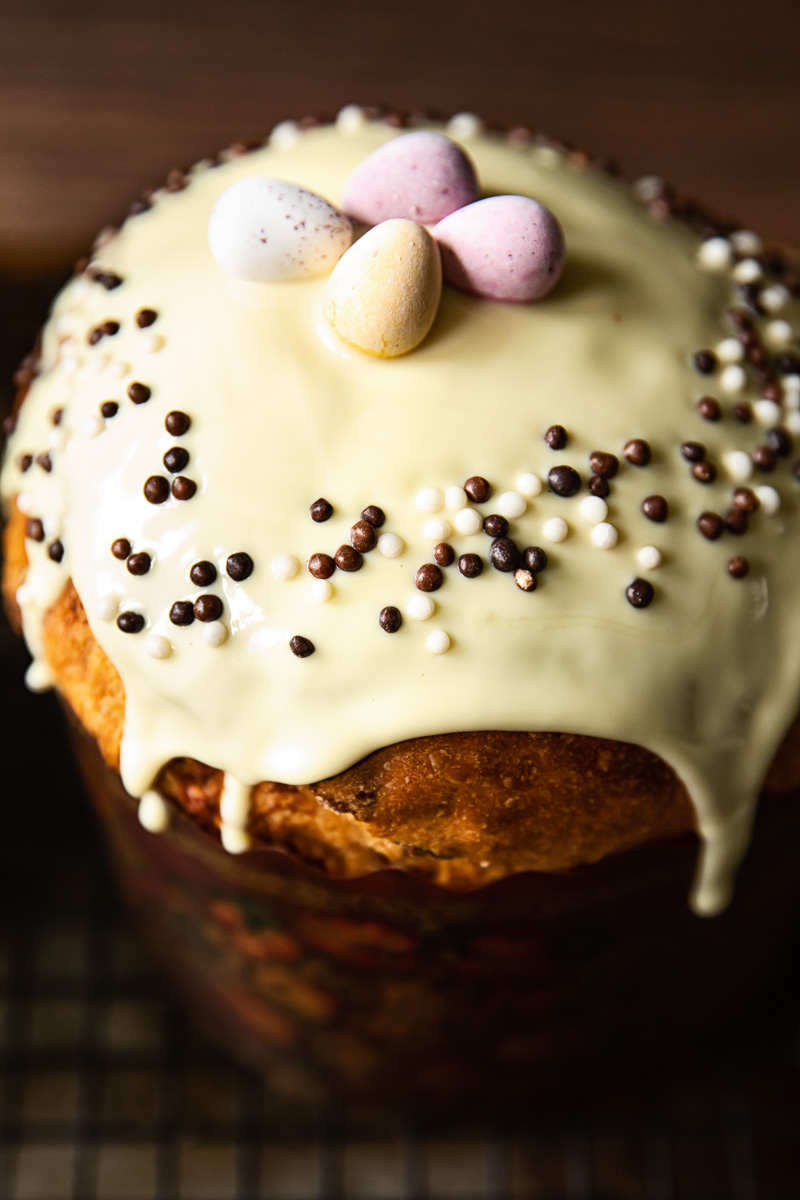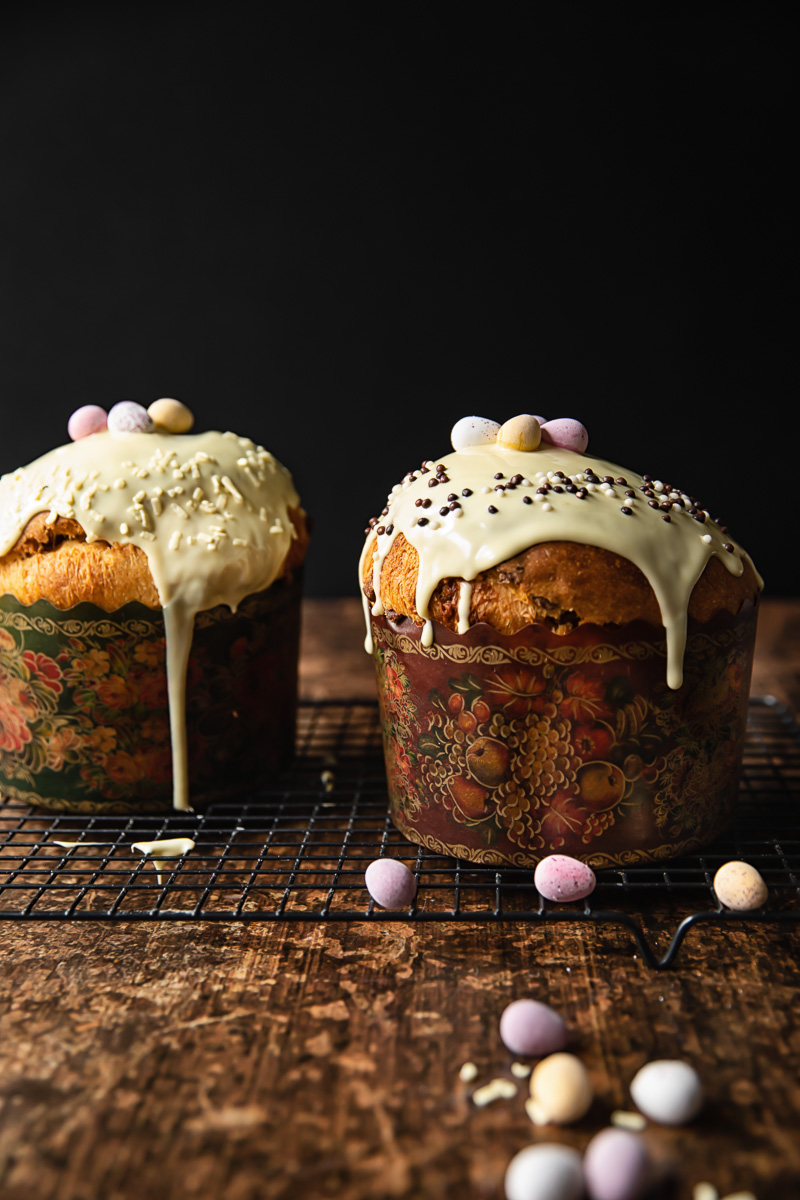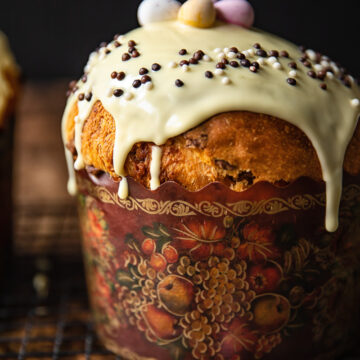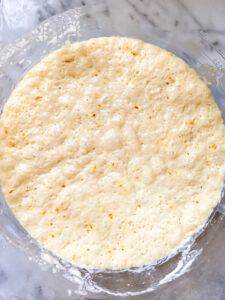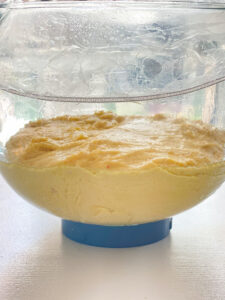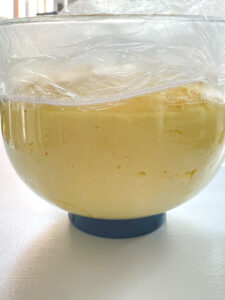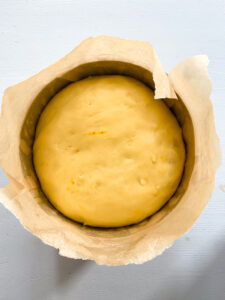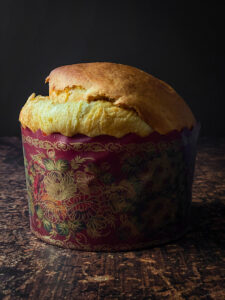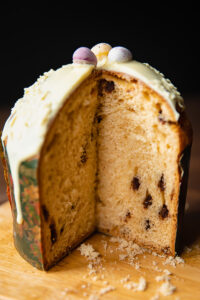Try this Kulich recipe with another Russian Easter favourite Sweet Cheese Pudding Paskha.
I feel an incredible pull of tradition every year when Easter comes around. No matter how busy I am, the need to cook, bake and colour eggs overpowers everything else.
I’ve written about Easter tradition of egg colouring. And if you’ve been following me for a while, you know that Easter is the biggest holiday in the Orthodox tradition, which is influential across Eastern Europe, whether people are Orthodox or not. Everyone celebrates Easter.
What is Russian Easter bread?
It’s called Kulich and also Paska. It is a sweet bread, that is ubiquitous in Russian and Ukrainian households around Easter. It’s an unbreakable tradition, like hot cross buns in other parts of the world.
Its sweet, rich and buttery yellow-coloured flesh studded with all kinds of great things like golden raisins, candied citrus peel, almonds. It’s what I want to stuff my face all the time.
If I were to compare it to anything I would say it’s a cross between Italian Panettone and French Brioche. It has the same light and fluffy texture with a wonderful amount of sweetness.
How to make it
My grandma would start the dough the night before, let it rise overnight and wake up well before dawn to make all kinds of goodies. Sweet and savoury filled pastries, cinnamon buns and Kulich.
Waking up to the sweet aroma of freshly baked bread is one of my favourite childhood memories. And I hope to pass them onto my children.
My grannie’s baking was the best, none of my friends’ grandmothers came even close to her greatness. Unfortunately, she never wrote down any recipes, and some of the most traditional recipes, which she was the keeper of, got lost with her passing.
Because of such high expectations, only heightened by my nostalgic memories, I never thought I would like another Kulich. However, I wanted to revive the tradition in my own family, so I went on a recipe hunt.
I spent a while searching in hopes to find one that resembled my grandma’s. Truth is, I was only a child and didn’t remember how grandma made the bread.
But I’ve managed to develop my rendition of the recipe. I’ve lost count how many Kuliches I baked to strike the perfect balance of a sweet and tender flesh, which also has enough structure to rise tall and proud.This recipe took me years to develop. It may not be exactly the same as my grandma’s, but it’s close!
I did add a few twists of my own. Firstly, I used chocolate chips instead of the traditional raisins and I topped it with melted white chocolate instead of sugar glaze. I also included saffron according to 19th century baking traditions.
If you make bread or cinnamon rolls, making this Easter bread recipe will not be too different for you. It takes a whole day because it consists to 3 stages. Nonetheless, none of them are time consuming or difficult.
What pan to use for Kulich
Kulich is baked to be a very tall bread, so large coffee cans are often used in Russia to create that traditional shape. However, I bake mine in a deep 8 inch cake pan or specially made moulds.
Decorating tips
Traditionally Kulich is covered with a simple sugar glaze made with a mix of icing sugar and water. My grandmother poured a combination of beaten egg white and sugar, which hardened and turned glossy.
I personally prefer using melted white chocolate to top my Easter bread. Sometimes I like to keep it unglazed and pipe the traditional Orthodox lettering on it.
XB, are the initials, which stands for Christ is Risen in Russian. It’s the phrase you will hear people say to each other all day long. Powerful words that replace ‘hello’ for the day!
Usually our first loaf disappears within a couple of hours. Thank God the recipe makes 3! That means you can indulge before the day knowing that your Easter table will be crowned with this gorgeous bread, that’s been enjoyed by generations of others before us.
Happy Easter!
Storage and leftovers
This recipe makes two loaves, so you’ll have plenty for the next couple of days. Store what you can’t eat immediately in a bread box or plastic bag.
It will remain fresh at room temperature for two days, or up to a week if refrigerated. But the earlier you eat it the better it will be, so indulge!
More Easter recipes
Double Decker Devilled Eggs Roast Leg of Lamb with Mint Sauce Glazed Ham Rosemary Potatoes au Gratin Tsoureki Greek Easter Bread
